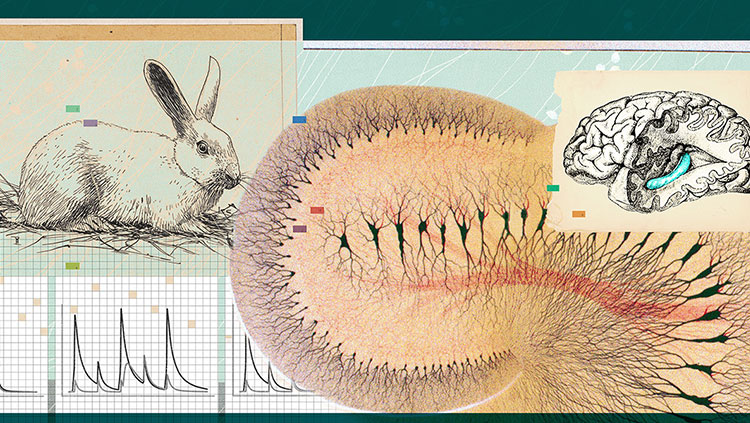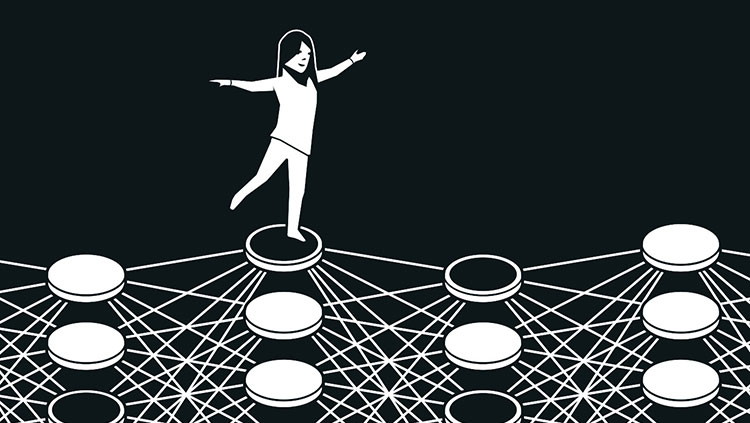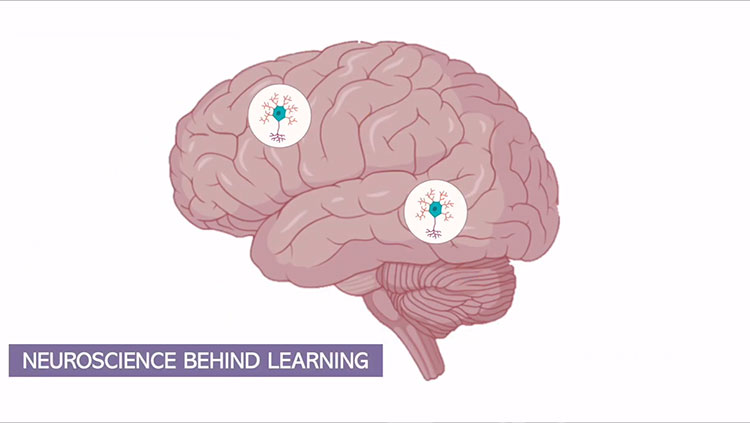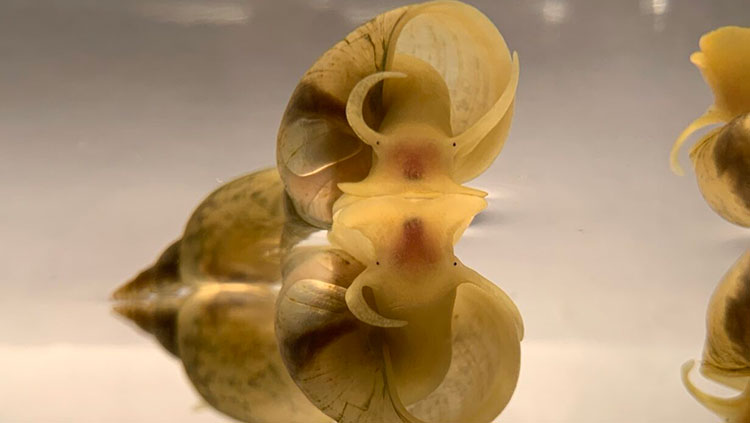Harnessing the Brain: The Neuroscience Behind How We Learn
- Published28 Oct 2024
- Source BrainFacts/SfN
Our brains take in a lot of data — up to 75 gigabytes worth every day. Multiple neural structures help us retrieve that information, organize it, make decisions based off it, and even use it to form new habits. The key to making sure new facts or skills stick is repetition.
Reviewing the things we want to remember helps strengthen the connections between neurons that allow us to recall them on demand. Understanding that process paves the way for a realistic approach to studying a new subject or picking up a new skill. Rewarding yourself after you reach key goals is a great way to stay on track, too.
This is a video from the 2024 Brain Awareness Video Contest.
Created by Swarna Vinaitheerthan.
CONTENT PROVIDED BY
BrainFacts/SfN
Transcript
On any given day, you absorb up to 75 gigabytes of information — which is enough to read every article on Wikipedia over three times. By understanding the neuroscience of learning, you can unlock your brain's full potential and achieve extraordinary success.
The three most important structures in the brain for learning are the hippocampus, cerebrum, and basal ganglia.
The hippocampus is fundamental for the formation of new memories, helping us recall facts, events, and experiences. Think of it as a bridge between short-term and long-term memory, assisting in the consolidation and retrieval of information vital for learning.
The cerebrum, particularly the prefrontal cortex, is essential for complex cognitive functions crucial in learning. The prefrontal cortex is the hub for decision-making, problem-solving, and strategic planning. It helps us organize information, set goals, and execute complex tasks by combining different information and guiding behavior based on previous experiences.
The basal ganglia play a pivotal role in procedural learning, habit formation, and motor skill acquisition. They enable individuals to learn sequences of actions, automate repetitive tasks, and coordinate movements with precision. The basal ganglia help us develop automatic behaviors using reinforcement learning mechanisms, essentially learning through rewards for good performance, effectively reinforcing that behavior.
Let’s take a closer look at the learning process with the neural pathways, long-term potentiation, and neurotransmitters.
First, let’s define these terms.
Neural pathways are networks of connected neurons that communicate with each other to process and transmit information in the brain. Think of them like roads in the brain, connecting different areas and allowing information to travel between them.
Long-term potentiation, or LTP for short, is a process in the brain where the connections between neurons become stronger after repeated stimulation. It's like strengthening a bridge so that information can flow more efficiently.
Neurotransmitters are like chemical messengers in the brain, carrying signals between neurons and helping them communicate with each other.
Now, how do these three things influence learning?
When we learn something new, neural pathways strengthen as we repeat the learning process. The process of these connections strengthening is defined as LTP, like we mentioned before. LTP makes it easier and faster to recall that information in the future. This is fundamental for memory formation, helping us remember the content that we learned.
Regarding neurotransmitters, after they are released, they travel to another neuron and attach to specific receptors, sending signals and triggering responses.
Dopamine is a key neurotransmitter in the learning process because of its influence on motivation, reward, and reinforcement. Dopamine is released in response to rewarding experiences, which helps motivate behavior. Dopamine makes you feel good when you achieve something positive, encouraging you to repeat the behavior. Regarding reward, dopamine pathways in the brain are part of the reward system. When you get rewards like praise or success, dopamine is released, reinforcing that behavior and increasing the likelihood of you repeating that behavior.
Now that we understand the different components of the learning process, how can we utilize this knowledge to maximize our own learning? Here are five strategies to achieve this:
One: Learn and review material consistently to strengthen neural pathways through LTP. Repeatedly exposing yourself to the material you want to learn will make recall easier and faster.
Two: Use reward systems to boost motivation and reinforce learning. By giving yourself small rewards after achieving study goals, your brain will release dopamine, which will strengthen positive behavior.
Three: Break down complex tasks into manageable parts, and organize the information you need to learn. By setting clear, achievable goals and creating a structured study plan, you utilize the prefrontal cortex’s ability to organize and plan, enhancing your learning.
Four: Develop effective study habits by leveraging the basal ganglia’s role in procedural learning and habit formation. Consistency in your study routine will help automate these behaviors, making the learning process easy and effortless.
Five: Keep yourself motivated by finding aspects of the material that genuinely interest you. Intrinsic motivation can enhance dopamine release and improve learning outcomes.
I encourage you all to apply some of these practices in your own lives and see how they can enhance your ability to learn, remember, and succeed.
Also In Learning & Memory
Trending
Popular articles on BrainFacts.org

















